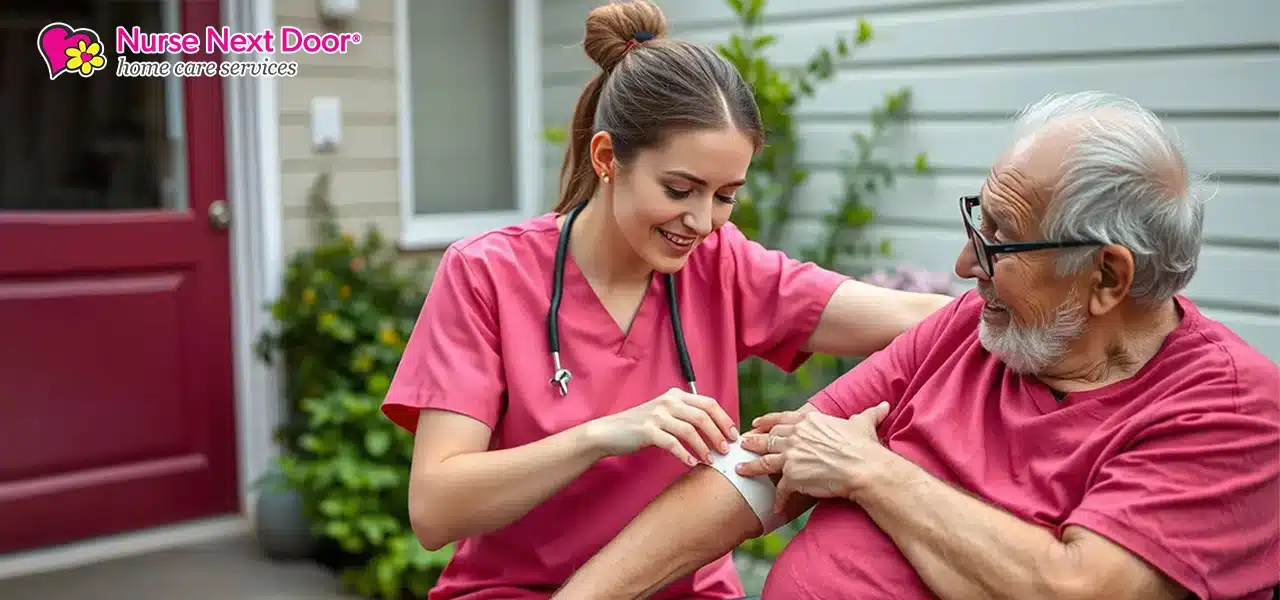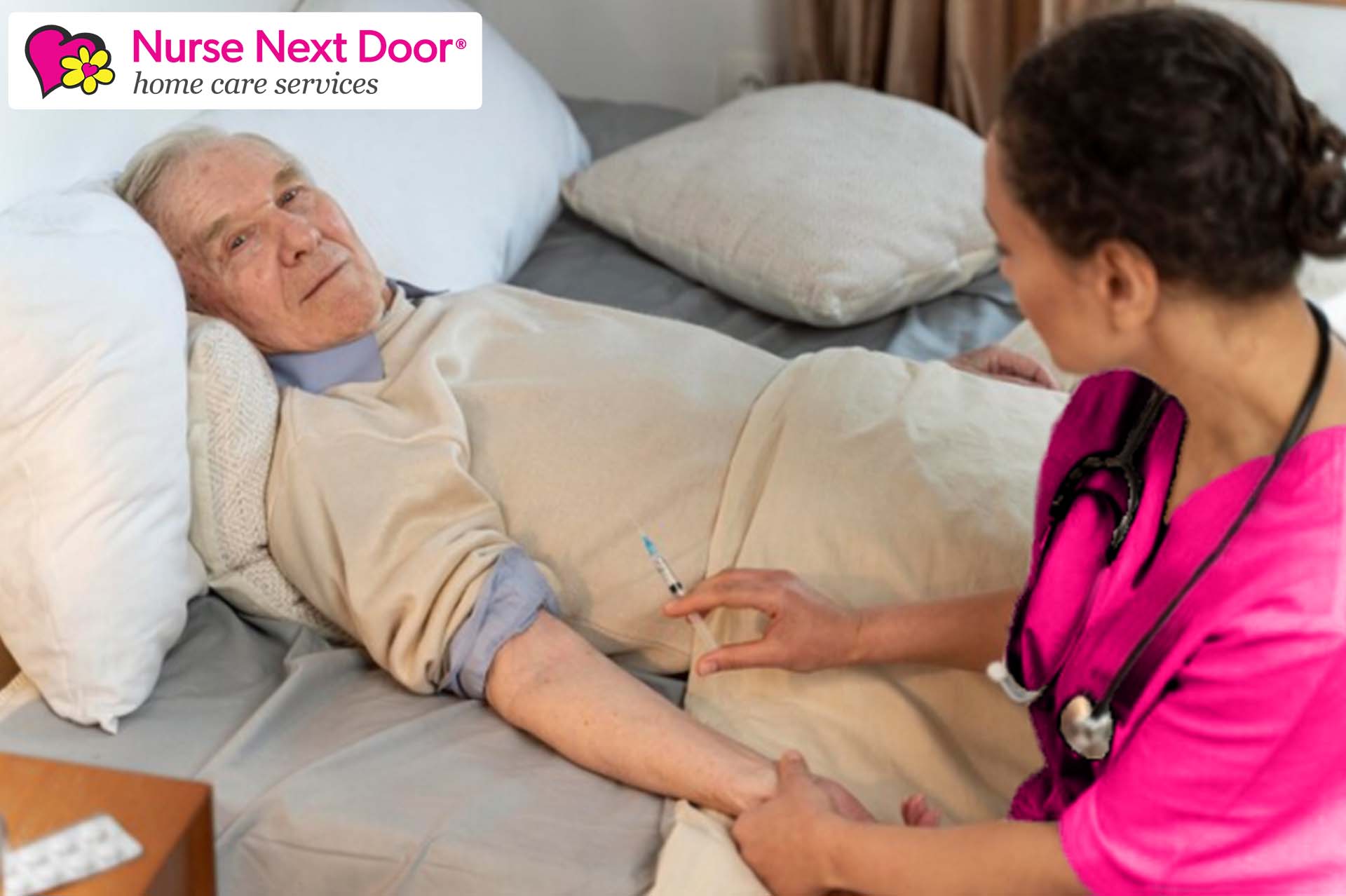
Do you know that around 2.5% of Americans have chronic wounds? Besides this, people in the US suffer from many other types of wounds including burns, injuries, and surgical wounds. Whether it is a small cut or a serious injury, managing wounds properly is essential for preventing infections and ensuring recovery. Wound care plays a key role in the speed and success of healing. Today, you can opt for in-home wound care to recover in a comfortable and familiar environment. In this guide, we will cover the different types of wounds, detailed steps for in-home wound care, and how to handle common challenges.
Types of Wounds and Their Care
Wounds come in many forms, and each type has its own specific needs. Understanding the type of wound you are dealing with is necessary for proper in-home wound care. Below, we will see some of the most common types of wounds and their care requirements.
Surgical Wounds
Surgical wounds are a result of planned medical procedures, such as surgeries. These can range from small incisions to larger openings, depending on the procedure. Surgical wounds typically heal well but they are vulnerable to infection. A common complication is the development of a surgical site infection (SSI), which can delay healing.
Care Tips: Keep the wound clean and dry. Replace the dressing frequently and look out for symptoms of infection, like redness or swelling. Consider an in-home wound care nurse if you have a large or deep surgical wound, notice any of these signs of infection, have a drain wound, or are struggling to take care of the wound on your own.
- Wound with a drain: To ensure healing, the wound is cleaned with an antiseptic and the drain is properly secured so that it doesn’t get dislodged. The RN will also monitor the amount of drainage every day.
- Deep wounds: A registered nurse uses sterile materials to pack the wound properly for healing. During the process, the wound is cleaned, packed with sterile gauze, covered with a secondary dressing, and monitored regularly.
Traumatic Wounds
Traumatic wounds typically occur due to accidents, such as cuts or falls. These wounds can vary greatly in severity, from small scrapes to deep lacerations that may require stitches. Most traumatic wounds heal well with proper care but there is always a risk of infection.
Care Tips: Begin by cleaning the wound gently with saline or clean water. Avoid using harsh chemicals because they can irritate the skin and delay healing. Apply a sterile dressing and make sure to cover the wound completely. If the wound is severe, seek medical care for additional treatment and consider reaching out to an in-home wound care nurse.
Diabetic Wounds
Diabetic wounds, mainly those on the feet, can be more tricky to treat. High blood sugar levels can weaken the immune system and slow the recovery process. This makes wounds in diabetic patients more susceptible to infection and harder to heal.
Care Tips: Always clean the wound gently with mild antiseptic and avoid applying too much pressure. Use dressings specifically designed for diabetic wounds because they are made to promote moisture and prevent infection. Observe the wound’s recovery closely. Consult your healthcare provider if healing is slower than expected. Diabetic wounds can lead to serious complications if left untreated, such as non healing ulcers or may lead to amputation in severe cases. Explore in-home wound care services to ensure full recovery. Since those with diabetic wounds, including foot ulcers, can face complications, wound care involves the following steps:
- The wound is cleaned with antimicrobial solutions
- Pressure on the wound is reduced using offloading techniques
- Hydrogels, collagen dressings with other advanced wound care products are used
- Education about controlling and managing diabetes is provided to the clients and their families
- RNs monitor the wounds to ensure healing
Chronic Wounds
Chronic wounds, such as venous ulcers or diabetic ulcers, are long-lasting and difficult to heal. These wounds may remain open for months or even years due to underlying health issues such as poor circulation or diabetes. Proper care and management are required to prevent further damage and ensure the wound heals properly.
Care Tips: Chronic wounds benefit from a moist healing environment, which promotes faster tissue regeneration. Use specialized dressings that keep the wound moist and change them regularly. To encourage healing, manage conditions like diabetes or circulation problems. An in-home wound care nurse can monitor such wounds and provide personalized services to ensure healing.
Pressure Ulcers
Pressure ulcers are also known as bedsores or decubitus ulcers. They commonly affect people who are bedridden or immobile for long periods. These ulcers usually develop in spots where bones are close to the skin, such as the heels and elbows. Pressure ulcers can deteriorate rapidly and lead to serious complications if not addressed.
Care Tips: Reduce pressure to prevent and treat pressure ulcers. Frequent repositioning for bedridden individuals is essential to reduce pressure on vulnerable areas. Use cushions, pads, or specialized mattresses to relieve pressure. Keep the affected area clean and dry and apply appropriate dressings to prevent infection. If there is any sign of infection, immediate medical intervention may be needed to prevent further complications. If a loved one is suffering due to bedsores, schedule a visit from an in-home wound care nurse.
Burns
Burns are a common type of injury, ranging from minor to severe. Minor burns can happen from touching hot surfaces or spilling hot liquids. More severe burns may result from fire or chemical exposure. The severity of the burn determines the necessary treatment, but all burns should be treated promptly to reduce damage.
Care Tips: For minor burns, run cool water over the affected area for several minutes. This helps reduce heat and prevents further tissue damage. After cooling the burn, cover it with a hygienic plaster or non-adhesive bandage. Seek immediate medical help for larger or more severe burns such as third-degree burns. Do not attempt to pull burnt clothing that is clinging to the skin. For extreme burns, cover the wound with a sterile cloth. This will prevent infection while waiting for professional medical care. Consider in-home wound care services to accelerate healing at home.
Steps for Proper Wound Care at Home
Proper wound care is a necessary aspect of the healing process. It minimizes the risk of infection and facilitates faster recovery. In-home wound care services usually follow these steps:
Preparation and Supplies
- Sterile gloves: To keep things clean and prevent infection.
- Saline solution: To gently clean the wound.
- Sterile gauze or bandages: For covering the wound and absorbing any discharge.
- Antiseptic wipes: To disinfect the area around the wound.
- Wound dressings: Specialized dressings, depending on the type of wound, promote healing and prevent infection.
- Scissors: To cut bandages or gauze to the proper size.
- Adhesive tape: To secure the dressing in place.
Cleaning and Dressing the Wound
Suitable cleaning and dressing help control infection and support healing. An in-home wound care nurse should:
- Rinse hands for 20 seconds.
- Wear sterile gloves to avoid contamination.
- Clean the wound with saline or lukewarm water (avoid harsh chemicals like alcohol).
- Dry the wound gently with a sterile gauze pad.
- Choose and apply the right dressing, ensuring it fits the wound size and type.
- Secure the dressing with adhesive tape, changing it regularly for optimal healing.
Monitoring and Follow-Up
Regular monitoring of the wound is important to ensure it is healing properly. When managed correctly, injuries can be healed without complications. Your nurse will monitor the wound for symptoms of infection and:
- Look for redness, bump, or heat close to the wound. These could be signs of infection.
- Look for any unusual discharge. A foul-smelling, thick, or greenish fluid may indicate an infection.
- Watch for pain. If the wound becomes increasingly painful, it could mean an infection is developing.
- Evaluate the wound daily. It should be healing and closing up. If it isn’t, or if you notice any problems, seek medical advice.
Other Considerations
While managing wound care at home, it’s important to:
Ensure Proper Hygiene
Maintaining cleanliness is necessary to prevent infection, especially when dealing with large or complex wounds. One way to avoid contamination is by using sterile gloves and changing dressings in a clean environment. Sterile techniques are used for cleaning the wound.
Dealing with Pain and Discomfort
Pain is a common issue experienced by those who are recovering from a wound. Numbing agents and medications can help relieve pain and discomfort. It’s important to follow a healthcare provider’s advice on managing pain effectively.
Health Conditions Contributing to Poor Healing
Several underlying health conditions can hinder the wound-healing process. These include poor circulation, diabetes, and immune system deficiencies. These conditions can result in slower healing and an increased risk of complications.
Explore Nurse Next Door’s In-Home Wound Care Services
Keep in mind that some wounds may need extra care. An in-home wound care nurse can provide various services to ensure full recovery at home.
Nurse Next Door skilled registered nurses (RNs) provide personalized wound care at home. They specialize in thorough wound assessments and create tailored wound care management plans based on your exact needs.
From surgical incisions to chronic wounds, Nurse Next Door’s RNs have the skills and qualifications to heal multiple wounds. Our RNs regularly assess the healing process, make sure you remain comfortable during wound care, and are qualified to provide advanced techniques like negative pressure wound therapy (NPWT).
In-home wound care is effective with the right approach. For complex wounds, professional help is essential. Consider trusted home healthcare agencies like Nurse Next Door for the best results. With our services, you can find healing in the comfort of your home.



